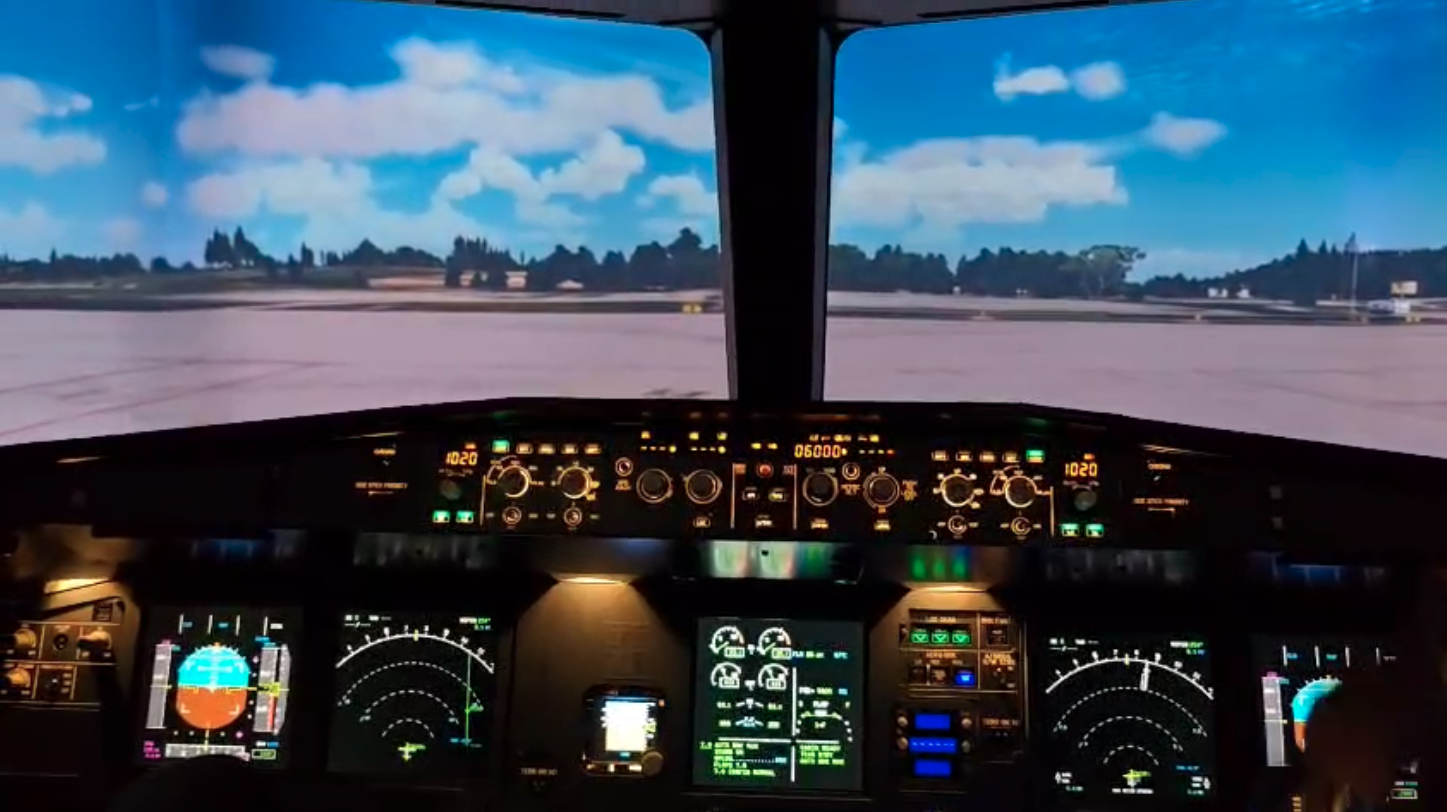Kraków 2025-05-07
AirPoint Airbus A-320 Simulator.
The Airbus A-320 is a medium passenger aircraft and is a family of aircraft consisting of aircraft designated A-319, A-320, A-321. On August 22, 1987, in France, the first flight was made by the prototype of the A-320 aircraft. On April 29, 2011, the first A-320 aircraft was delivered to a Polish aviation company.
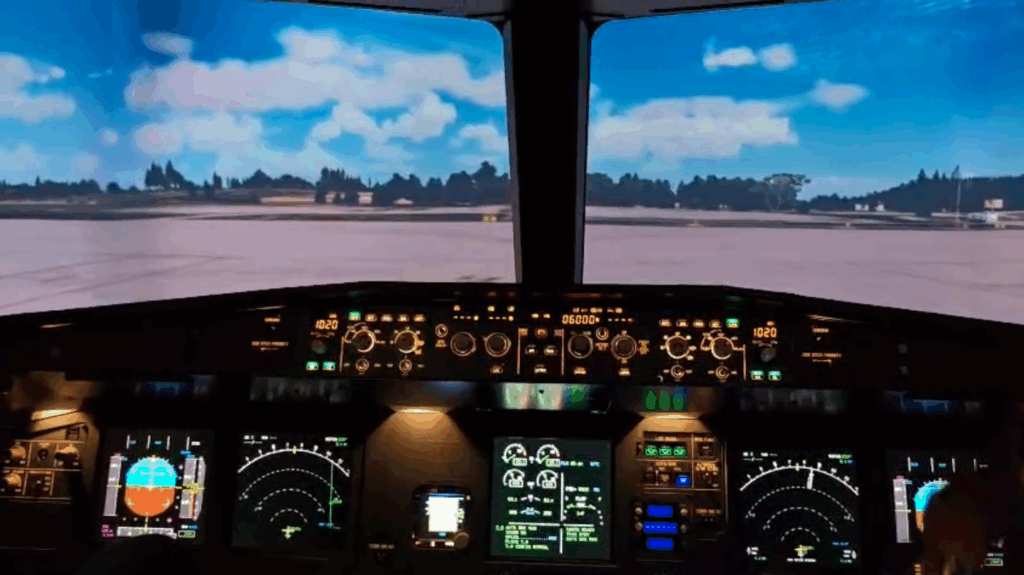
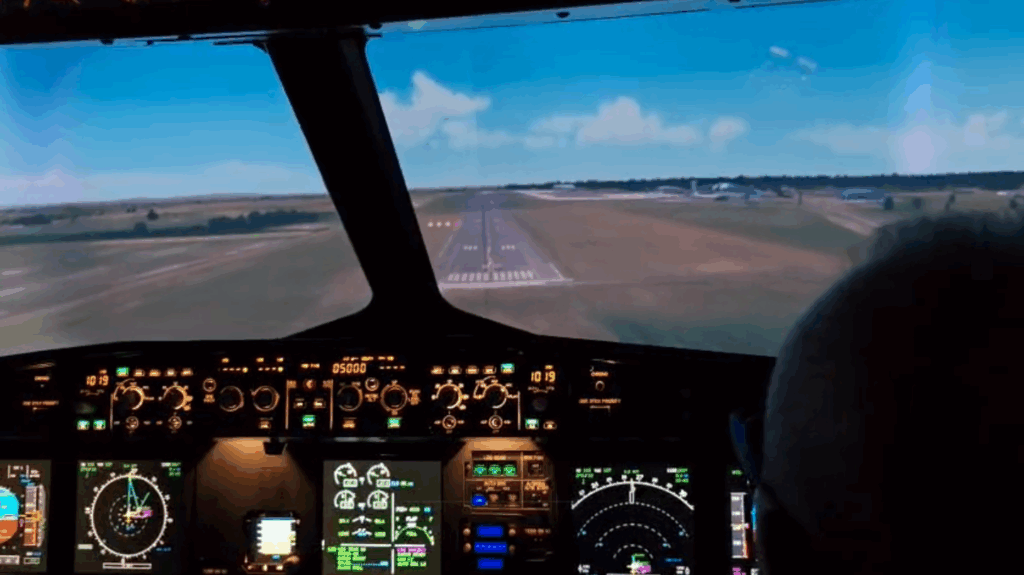
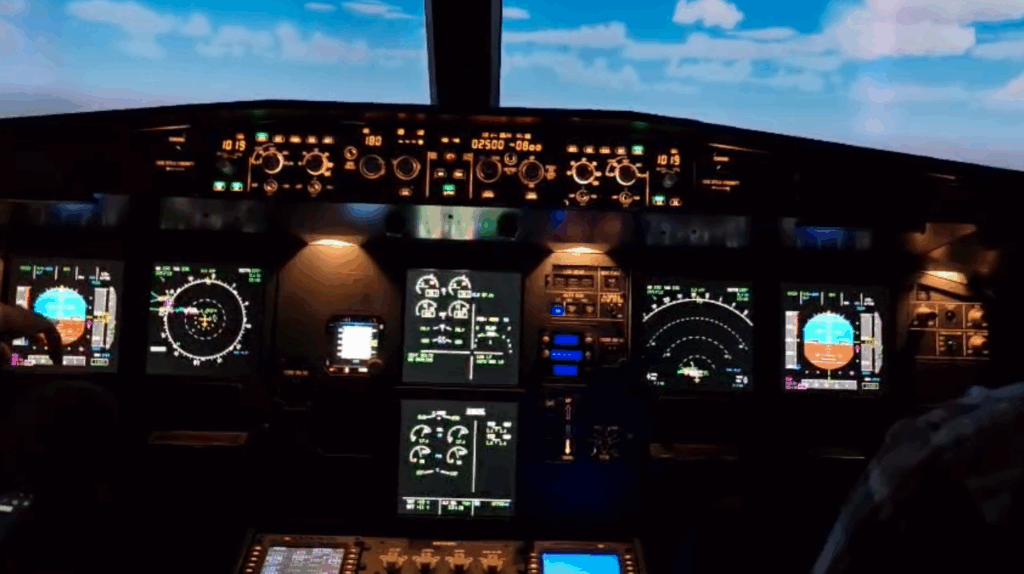
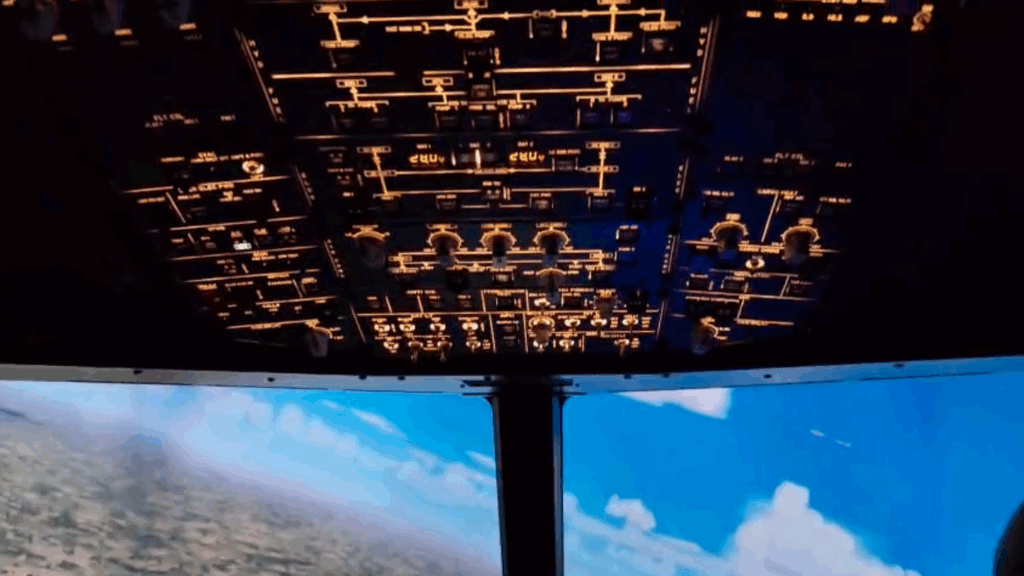
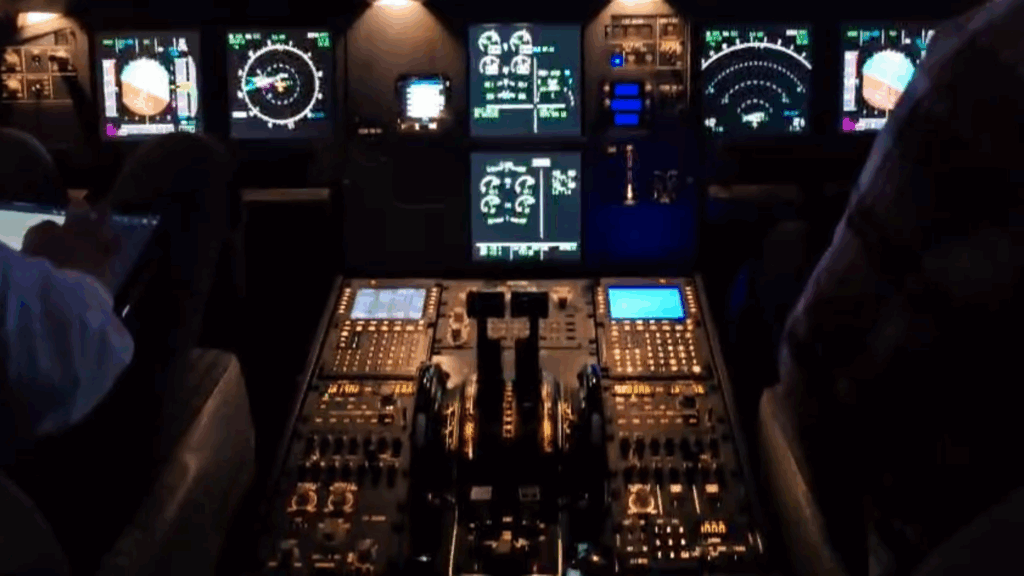
History of the A320 aircraft.
The commercial passenger aircraft A 320 is an extremely popular machine in Europe and the world. The design was a great success and is currently (2025) still being developed. To understand the basis of its success, we must go back to the 60s of the 20th century. At that time, the governments of the largest European countries came to the conclusion that they were unable to compete with the huge aviation concerns from the USA. Only mutual cooperation was able to lead to the creation of designs capable of competing with aircraft being built in the USA. This is how the Alpha Jet and Jaguar combat aircraft and the supersonic passenger Concorde were born. In July 1967, ministers from France, the UK and Germany met and decided to establish the Airbus holding company, which was initially a cooperation and support program, transforming into the European Airbus Concern. On May 29, 1969, at the air show in Le Bourget, France, an agreement was signed initiating the A-300 project, the first twin-engine wide-body passenger aircraft in Europe. The Airbus Industry consortium was officially founded in 1970. The headquarters of the concern is located in Toulouse, France. The consortium included the French company France’s Aerospatiale and four German companies from the Deutsche Airbus group: Messerschmittwerke, Hamburger Flugzeugbau, VFW GmbH and Siebelwerke ATG. A few years later, the company was joined by the Spanish company Construcciones Aeronauticas SA., better known as CASA (Seville). The British also joined the cooperation, establishing their headquarters in Bristol. Since 2009, Airbus has had subsidiaries in China (Tianjin), India, the USA and Japan. The first product of the group was the successful A-300 aircraft, which flew on October 28, 1972. The next was the Airbus A-310, which used new electronic flight control systems.
Avions Marcel Dassault – Mercury.
The Airbus A-320 was created as Airbus’s response to the Boeing B 737 and MD DC-9, which hit the European routes.
Does this mean that there were no suitable designs in Europe? There were. Among them, the French passenger plane Avions Marcel Dassault Mercury stood out. Work on the plane began in 1967. Two prototypes were built, two airframes for static tests and 10 production aircraft for Air Inter. The program was financially supported by the French government. The first flying prototype, powered by Pratt & Whitney JT8D-11 engines, with the registration F-WTCC, took to the air on May 28, 1971. The second prototype, with the target Pratt & Whitney JT8D-15 engines and the registration number F-WTMD, flew on July 19, 1973. The aircraft carried 134-162 passengers in a single-class layout. The seat layout was 3×3 with a single aisle. The program had a chance to become international, because Italian, Belgian, Spanish, Canadian and Swiss companies joined the program. It was expected to sell about 300 aircraft. Unfortunately, no orders came from other airlines and the last Avions Marcel Dassault Mercury aircraft ended its service in 1995. Importantly, the aircraft never suffered any accidents or disasters, carrying about 44 million passengers. In 1975, Avions Marcel Dassault also began work on the Mercury 200 aircraft with a fuselage extended by 6 m and carrying over 200 people. The main reason for the lack of success on the market was the higher price (50% more than the B 737) and limited technical service outside France.
Basic data Avions Marcel Dassault Mercury; classic layout, two PW JT8D-15 turbofan engines with 2 x 69 kN thrust. Empty weight 27,900 kg, total weight 52,000 kg, cruising speed 946 km/h, landing speed 220 km/h, range with payload 1,770 km.
The creation of the Airbus A-320.
Work on the A-320 had been underway since 1981. The first official information about the program was revealed at the 81 Paris Air Show. It was reported at the time that Air France had already ordered 50 machines, then designated A 320-200. Deliveries were planned to begin in 1986. The initial plans were to create the A 320-100 versions, carrying 130 passengers and the A 320-200 with 160 passenger seats. The A 320-200 is 3.20 m longer than the A 320-100, which allows for 154 to 172 passenger seats. The main differences were to be in the length of the fuselage, operating weight and powerplant thrust. The width of the fuselage was chosen to accommodate a single row of seats in a 3 x 3 configuration, similar to the B 737 and DC-9. A 1.21 m high and 1.56 m wide luggage compartment was placed under the passenger cabin, which allows for the placement of LD3 type aircraft containers. A wing with a 25 degree sweep, 9.5 aspect ratio and an area of 125.8 m2 was chosen. The wing was defined as high-lift with higher aerodynamic quality, which is to reduce fuel consumption.
It was already known at that time that the aircraft required two turbofan engines with a thrust of 2 x 112.2 kN (2 x 11,460 kG). Of the available engines, the following were considered; Rolls-Royce RJ 500 (supposed to be available in 1983), Japanese-made RJ 500-35 (also expected to be available in 1983), Pratt-Whitney PW-2025 (developed from the JT-10D engine) and the joint General Electric-SNECMA CFM International CFM-56-200.
Basic data A 320-200 (1981); span 34.57 m, length 39.24 m, height 11.85 m, wing area 125.8 m2, empty weight 40,835 kg, take-off weight 71,900 kg, freight weight 19,565 kg, fuel weight 18,800 kg, max landing weight 65,700 kg, cruising speed 832 km/h (Ma-0.78) at an altitude of 10,620 m, max range with 172 passengers 3,700 km.
The A-320 aircraft program officially began in 1984. From the very beginning, the company advertised the aircraft as the world’s first commercial aircraft with a digital flight control system; fly-by-wire. And although this information was a bit far-fetched, the pilots’ cockpit without a traditional yoke was very imaginative. The yoke was replaced with a joystick, which is on the left side for the left seat, and on the right for the right. Advertisements constantly emphasized that the design used technologies that far outstripped those used by competitors, especially the B 737 and B 727, with which it had to compete. Since the aircraft was to be visually similar to the B 737 and Avions Marcel Dassault Mercury and had an identical passenger cabin layout, it was necessary to ensure the lowest possible operating costs. In February 1981, Airbus representatives presented the A-320 model for the first time. When defining the parameters of this aircraft, the designers set themselves the task of using the most modern technologies such as: digital fly-by-wire flight system, modern glass cockpit avionics (EFIS), central flight management system. Much greater range than the B 727 aircraft, by as much as 50%, was emphasized. It was already the 80s of the 20th century, so composites appeared much more widely in the design. The two-person cabin was a certain shock for commercial aircraft crews. It was a time when there was a lively discussion in the aviation world about the number of people in the cockpit. The loss of the third crew member did not gain the support of the flight crew. However, the airlines were simply delighted. Passengers were basically indifferent to it. The French press called the aircraft unusual epithets: robot aircraft, computer aircraft, flying computer, intelligent machine, etc.
For the program to develop, orders had to appear from airlines. The first customer for the Airbus A-320 was the French national carrier, Air France. In 1983, Airbus received an order for 80 aircraft. In 1988, the company already had 600 firm orders from all over the world.
The aircraft first flew on February 22, 1987. In 1988, the aircraft received European certification. On March 28, 1988, the A 320 performed its first commercial flight in the colors of Air France.
The A-320 crash on June 26, 1988.
Less than three months after the start of commercial flights, a disaster occurred that shook the entire aviation world. An Air France A-320 crashed into a hillside covered in forest, burying in the wreckage “only” three people, out of 127 on board. The A 320-100 F-GFKC no. 009, powered by two CFM-56-5A1 engines. Delivered on June 24, 1988. The plane spent 22.5 hours in the air. The crash was the result of poor preparation of the crew for the flight, or even neglect of proper preparation for the flight. It was also revealed that conversations in the cockpit were conducted outside the situation. The pilots’ licenses were withdrawn and they were dismissed from work at Air France.
The A-320 is the base model for; A-318, A-319, A-320 and A-321.
In 1999, the manufacturer delivered the 1,000th A-320 family aircraft. By 2013, over 5,400 A-320 family aircraft had been built, with an order book of another 3,750. The A-320 models are built in Toulouse, while the A-318/A-319/A-321 versions are assembled in Germani in Hamburg, where A-320 production was also to be moved. The fuselage components are transported to the plants using a special version of the Airbus A-300, the A300-600ST Beluga. Production of the A-320 has also been undertaken in China, in the city of Tianjin, for the Asian market. Airbus’ Tianjin plant has delivered 126 aircraft since June 2009 and planned to deliver another 46 by 2013. In 2013, production of the A-320 family aircraft was 42 per month. However, this was production carried out on three production lines (France, China, Germany), not on one, like the B 737.
A-320 NEO aircraft. 2014.
As technology advances, Airbus has decided to modify the A-320 family of aircraft, designating it as the A-320 NEO. The new aircraft will use 15% less fuel, which will increase its range by 800 km. Its payload has increased by 2,000 kg. The aircraft is also quieter and more environmentally friendly.
By the end of March 2025, Airbus has delivered a total of 11,971 A320 family aircraft, including the A318, A319, A320 and A321 models, in both the CEO (Current Engine Option) and the newer NEO (New Engine Option) versions. The aircraft are used by 375 operators. Airbus is the second largest after the Boeing B-737, of which more have been built. By the end of March 2025, Boeing had delivered a total of 12,030 737 family aircraft, making it the most frequently delivered passenger aircraft in aviation history. By March 2025, 1,784 B-737 MAX aircraft had been delivered.
AirPoint Flight Simulator Experience.
AirPoint is a company that offers the opportunity to fly in commercial aircraft simulators in Poland. Currently (2025), the company has 7 simulators: Boeing 737-800 in Warsaw and Katowice, Boeing 737 MAX-8 in Warsaw and Poznań, Airbus A320 in Kraków, Gdańsk, Wrocław. The cockpits are mapped one to one and there are over 600 switches and controls. The pilot has a 210-degree view from the cockpit and sees the image generated by three FULL HD projectors. The system has over 24,000 airports from around the world saved in the system. Weather is simulated, as well as emergency situations. The system has over 1,000 different scenarios of events and situations. Simulators are available for children and the elderly, for men and women. Virtually anyone can feel like a pilot.
Written by Karol Placha Hetman

